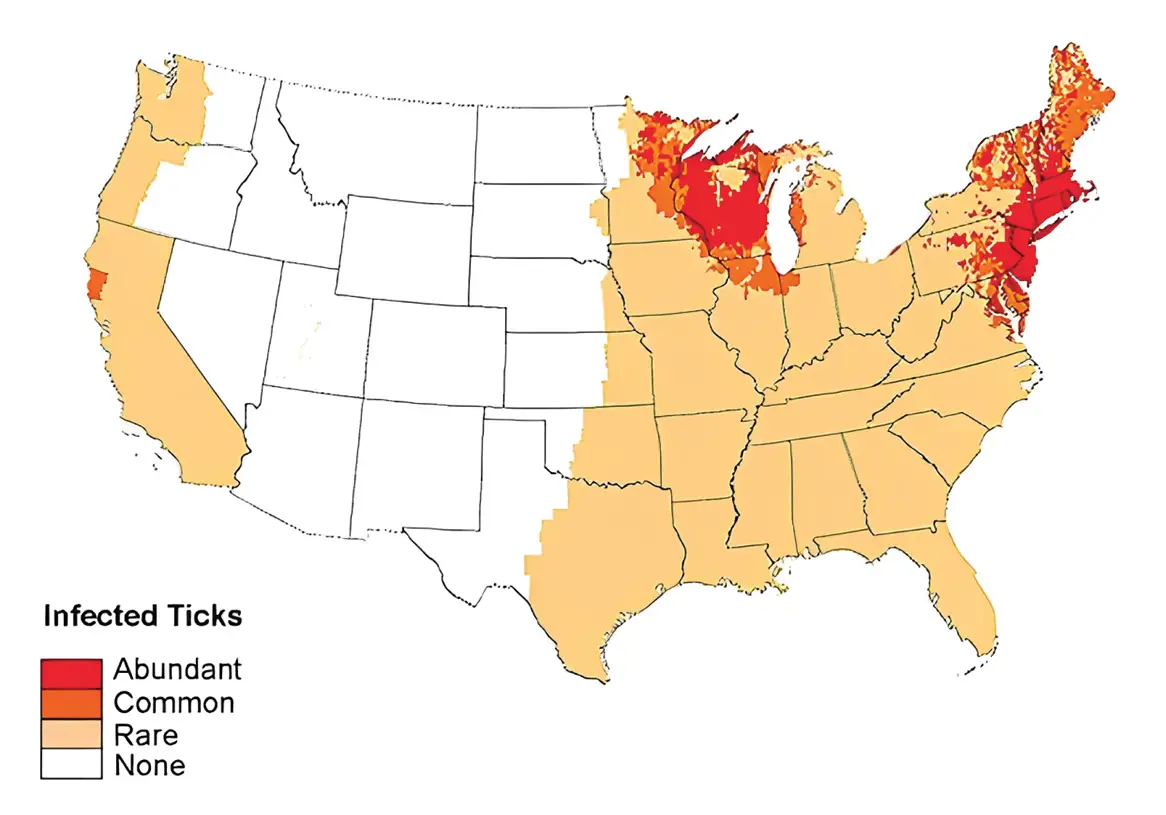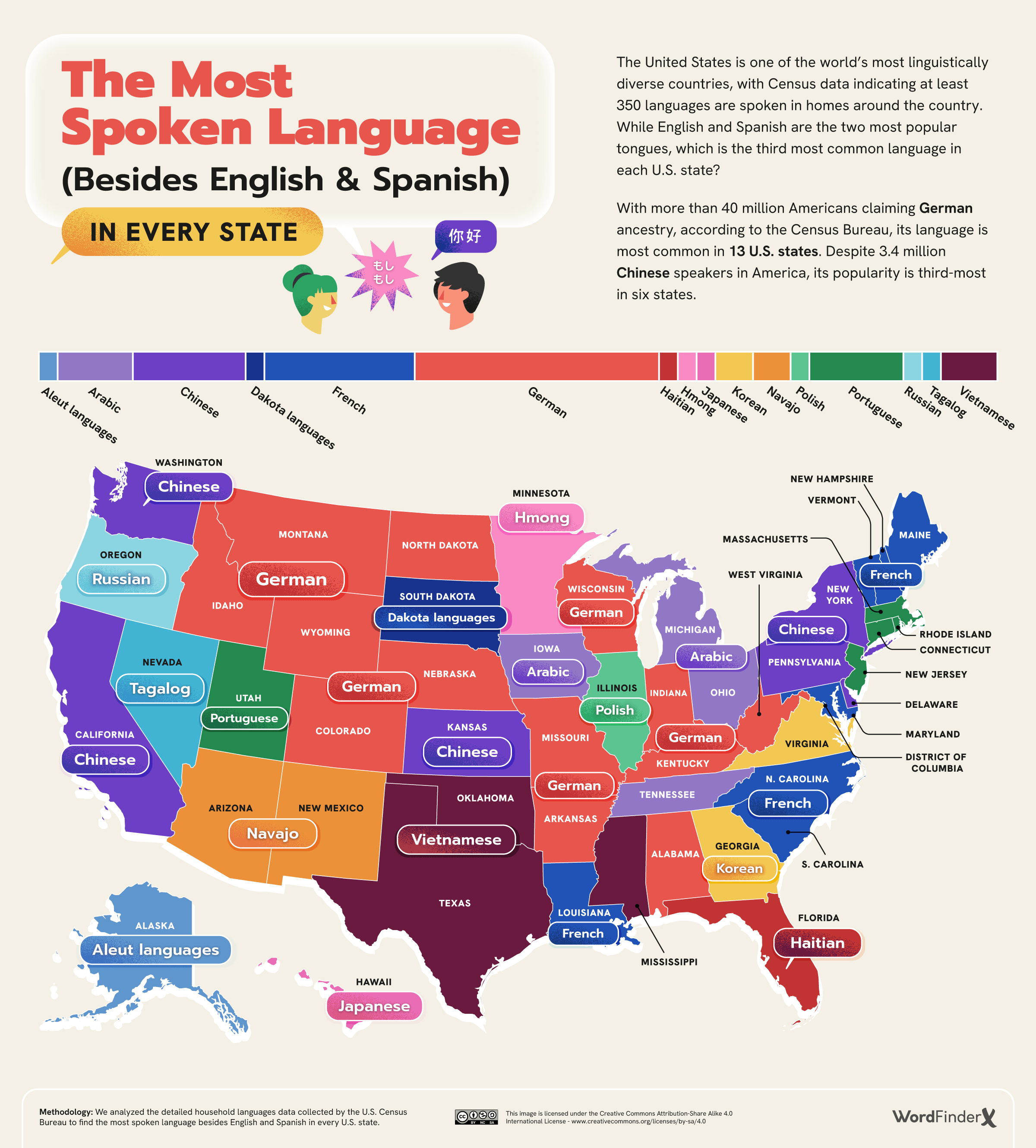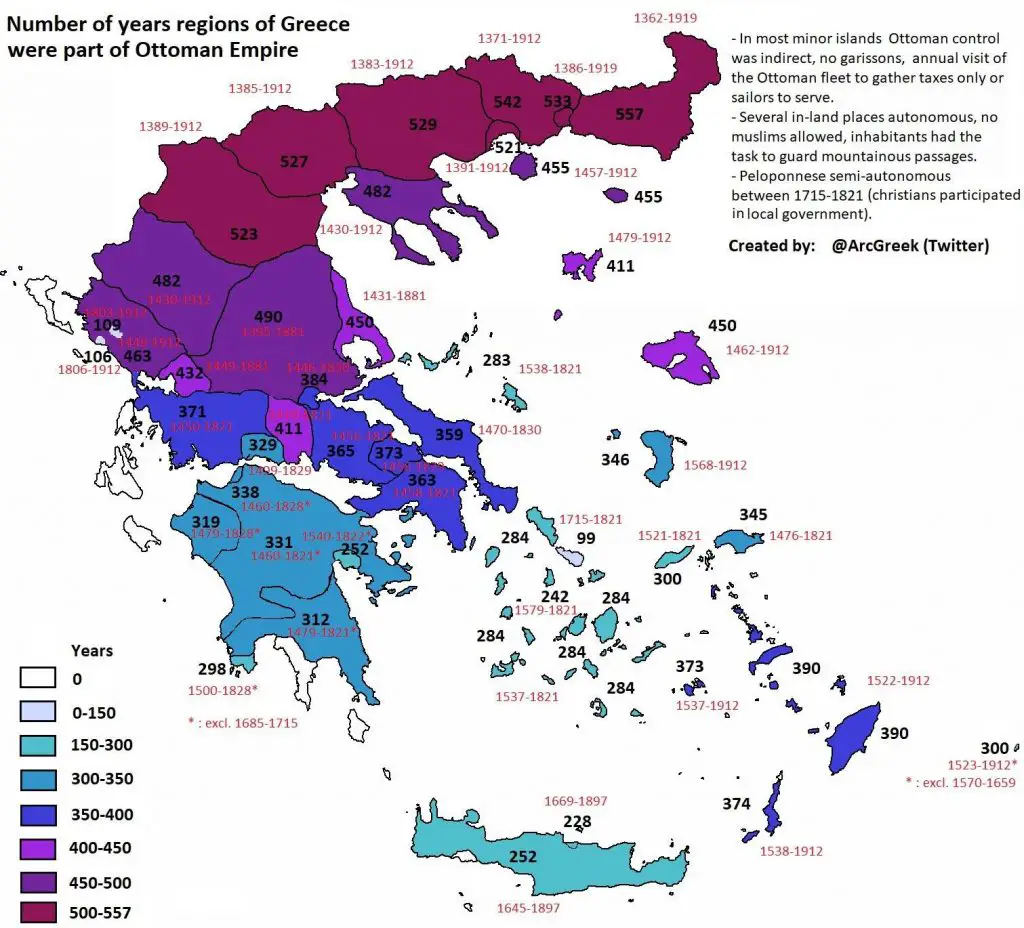The Caucasus, ethno-linguistic makeup
Caucasus Region in every 50 km there is a language


With the incremental absorption of the Caucasus into Russian Empire from Persia (lran) and the Ottoman Empire/Turkey in the first half of the 19th century, proper population censuses were produced, improving with time until the advent of the Soviet Union by 1925. The Soviet population censuses were detailed and carried much information in addition to the simple head counts. Some numbers were skewed for political reasons, but in the balance, their figures were trustworthy. It was the ethnic and linguistic data that borne the deepest scars of political expediency and manipulation.
Following the dissolution of the Soviet Union in 1991 and the emergence of four new independent polities in the region (Russia, Georgia, Azerbaijan and Armenia) the ensuing turmoil and instability has led to less accurate and trustworthy census data. There are also the issue of boundary disputes involving all countries and political entities in the Caucasus. Armenia is in an effective occupation of about one-fifth of the landmass of Azerbaijan Republic, entailing the expulsion of about 15% of the total population of the latter republic since 1992. Likewise, Georgia has lost any control over the ethnic republics of Abkhazia and South Ossetia, entailing the mass expulsions of ethnic Georgians and the affiliate groups from their home areas in those republics. Meanwhile, in the Russian North Caucasus, Chechnya and Ingushetia both claim certain common areas on their borders and both report those areas as their national territory. For this work, I have used the pre-1991 proportions except for Abkhazia and South Ossetia that are subtracted from Rep. of Georgia’s totals.

Only the primary ethnic groups are noted by name on this map, and then for AD 1990. Since then, many ethnic groups such as the Kurds in Azerbaijan and the Georgians in Abkhazia, have been deported from their homes.
Not every ethnic group defines itself by the element of language-a method preferred by the Soviet census takers, and even then, clearly different languages are grouped together for political reasons (e.g., Georgian) or separated for the same political motivations. Here, they are depicted as they properly merit.








The tats mostly live in Baku and there are not any local kurds in the occupied territories, as they became refugees like other people from those places. Do you think when the armenians captured the territory asked a person if he is a kurd or not?